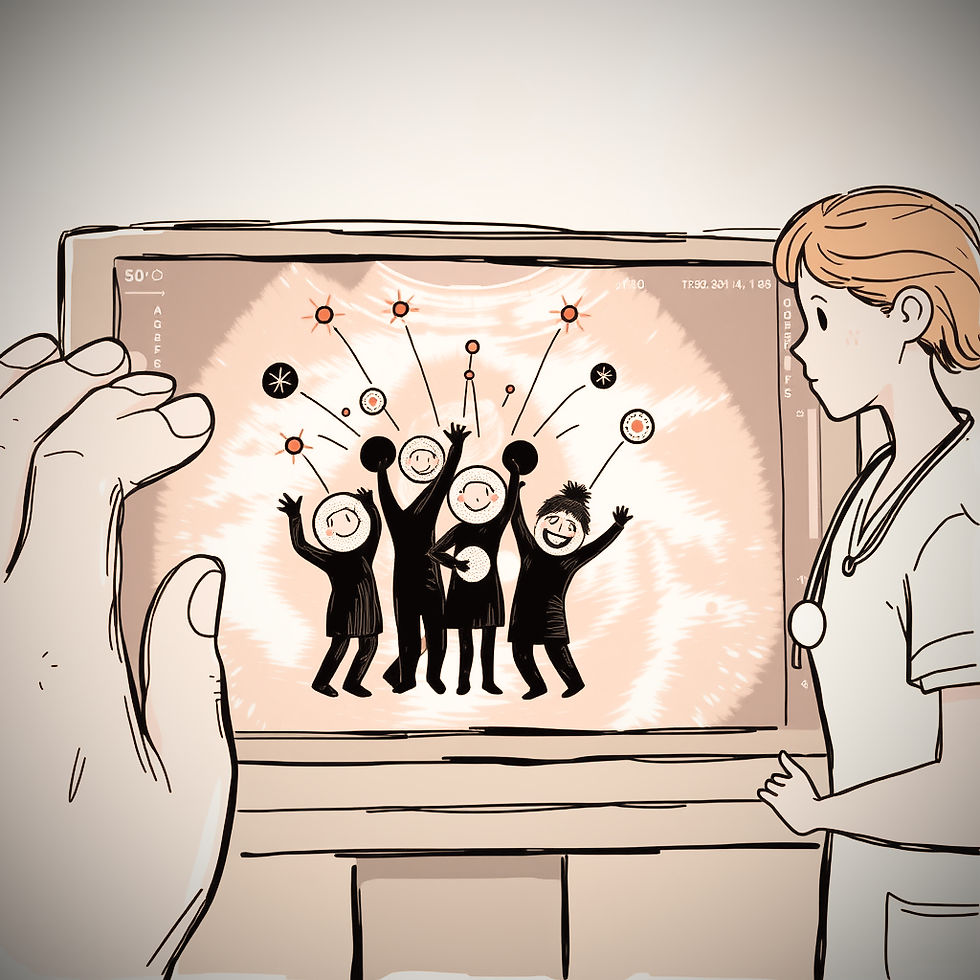Information Overload
- myeggsandi
- Oct 8, 2024
- 4 min read
Updated: Sep 30
Continued from previous post Egg Reserves.
Having had time to process the news that my AMH levels were very low, I was ready for my information session with the nurse in the clinic. The purpose of this session (which lasted for about 60 – 90 minutes) was: 1) to explain the oocyte vitrification (egg freezing) process from a practical standpoint; 2) to introduce you to the three types of hormone injections which are required before the egg retrieval step; and 3) to discuss the risks and challenges associated with successfully freezing some eggs.
Luckily, I had learned my lesson from the appointment with the Consultant and I had arranged for my sister to accompany me to this session. And boy was I glad I did because I was not prepared for the volume of information and instructions which were going to be verbally delivered to me.
Feeling overwhelmed!
From the moment it started, I had to really focus - all of it was new information and it felt like it was being delivered in a somewhat jumbled manner. I could feel myself becoming quite overwhelmed early on in the session but I managed to calm my mind and tried to stay as focused as I could. Thankfully, my sister was taking as many notes as she could which took a little bit of pressure off.

Image created using WIX AI image generator.
I was informed that the ovarian stimulation process involves three different hormones, each with their own injection timeline, frequency and area of delivery into the body. On the “real day one” of your period (more about this to come in a future post), you are instructed to notify the clinic and a baseline trans-vaginal ultrasound scan will be scheduled within 3 days of Day 1.
If everything looks good with the scan (they see a quiet ovary), then the ovarian stimulation injections can begin. The medication used for this is a copy of the natural follicle stimulating hormone (FSH) and is administered in this process to stimulate the ovaries to produce more than one egg at a time. The instruction given was to inject subcutaneously into the tummy area once per day in the evening.
On Day 5 of the stimulation period, a second hormone was introduced to prevent ovulation. It does this by preventing the body’s release of luteinising hormone (LH) which is needed to release the mature egg cells from the ovaries. This one injected subcutaneously once per day, at the same time each morning.
Next step is an ultrasound scan (and possibly blood tests) on Day 7. This will continue daily, or every second day until there are at least three follicles in the ovaries which have met the minimum size threshold for retrieval. If and when this is the case, the clinic will schedule the egg retrieval procedure. This is where the third hormone injection comes in to trigger ovulation and needs to be administered exactly 36 hours before the retrieval procedure.
It was explained to me that there is no guarantee that I will successfully reach the vitrification (freezing) stage. For that to happen, I need to be able to start the injections (confirmed at baseline scan), reach a stage where there are at least three follicles in the ovaries which have met the minimum size threshold for retrieval, successfully retrieve the eggs from the ovary, and finally, hope that any eggs which have been retrieved are mature and viable for freezing! Phew!
The nurse went on to explain all of the risks associated with the process and the possible reasons why it might not work, for example, the presence of a cyst(s) in the ovary at the base line scan.
I left the clinic that day feeling very overwhelmed and couldn’t help but think to myself that so many things need to go right for me to get to the egg retrieval stage, let alone getting any mature eggs which are suitable for freezing. This was exacerbated by the possibility that I might have to go through this a few times!
The power of a flowchart.
It is not an understatement to say that I felt very small inside something very big. I got home from the clinic and felt quite lonely and not sure what to make of everything. All of this information was bouncing around in my head and I was worried I would forget it all. However, after a conversation with a good friend that evening, I was reminded that I just needed to do what I do best which is to put some structure around this and get it out of my head and onto paper. I figured a wall was better…

So, later that week, I spent a couple of hours with coloured markers and got all of this information out of my head and into a structured, systematic process flow chart. Seeing the route to success, plus all of the ‘go/no go’ points (and the associated costs incurred at each point) made me feel 100 times better. I genuinely felt lighter and quite proud of myself!
It felt like I was taking a little control over something which, in reality, I had very little control over. The anxiety around all of the uncertainty is still there, however, I manged to remove one source of stress by having it all recorded in an easy readable way. In fact, seeing this all down in writing was one of the motivations for writing this blog. I hope that this will enable others in my situation to feel more informed, more prepared and less overwhelmed.
Finally, it showed me that all I needed to focus on was ordering the hormone medication from the pharmacy in advance and calling the clinic on the “real day one”. This I could do!




Comments